This month’s blog looks at a series of topics kids often have difficulty with in the first few weeks of their physics classes. While this by no means is an exhaustive review, much of the remaining course depends upon mastery of these subjects. As such it is really worthwhile for students to review them, especially as they will certainly appear on the AP® exam. If you follow us on twitter (and, of course why wouldn’t you?! We are at https://twitter.com/warpdrivetutors) you will have seen our discussions on much of what follows. Below we have a summary of those notes, plus a few more notations and discussions.
Let’s begin with a brief note about vectors. Vectors will appear daunting at first but once you start to use them it becomes second nature. We won’t touch upon vectors here but you can’t do physics without vectors, so if that is a problem, see your teach for some extra help.
First, lets look at kinematic equations. You need to memorize them; they come up so frequently and even though most tests provide them separately it will be to your advantage to have them committed to memory. Here they are; assume constant acceleration:
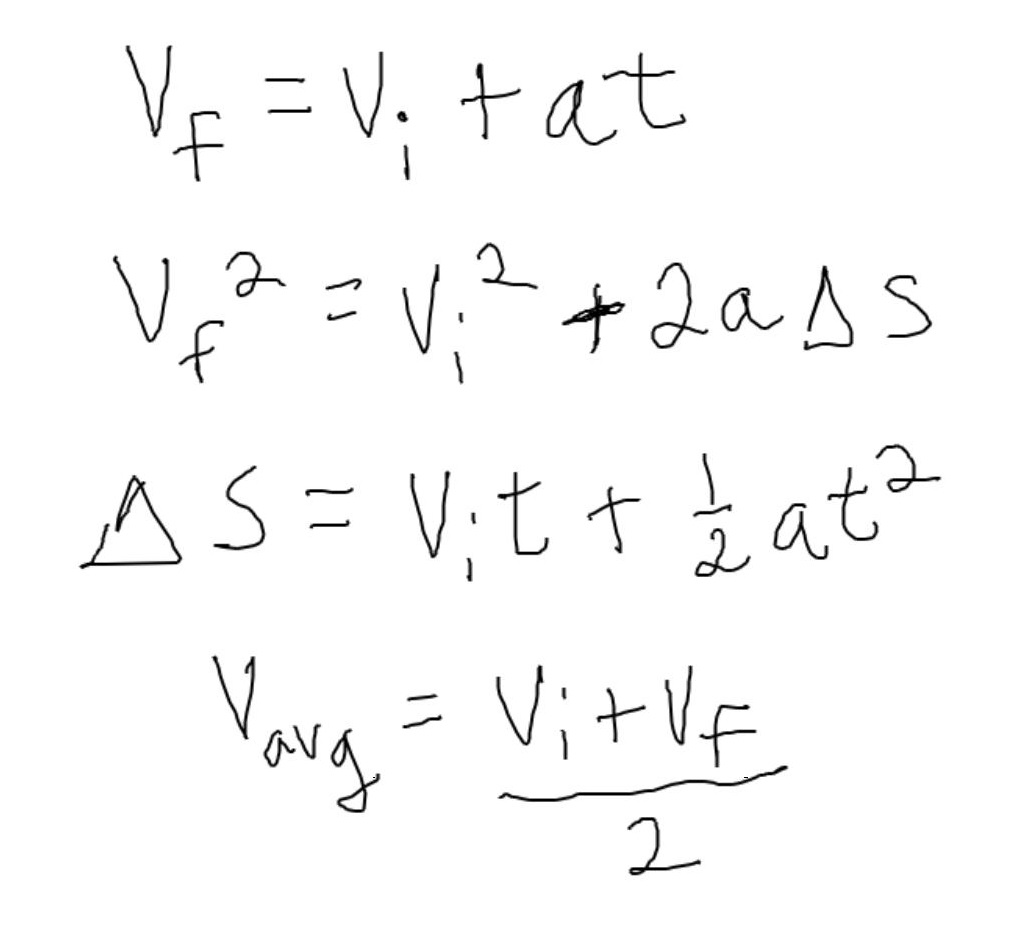
There are a number of constant acceleration graphs you need to know and completely understand the subtleties of. These will include
Distance vs Time
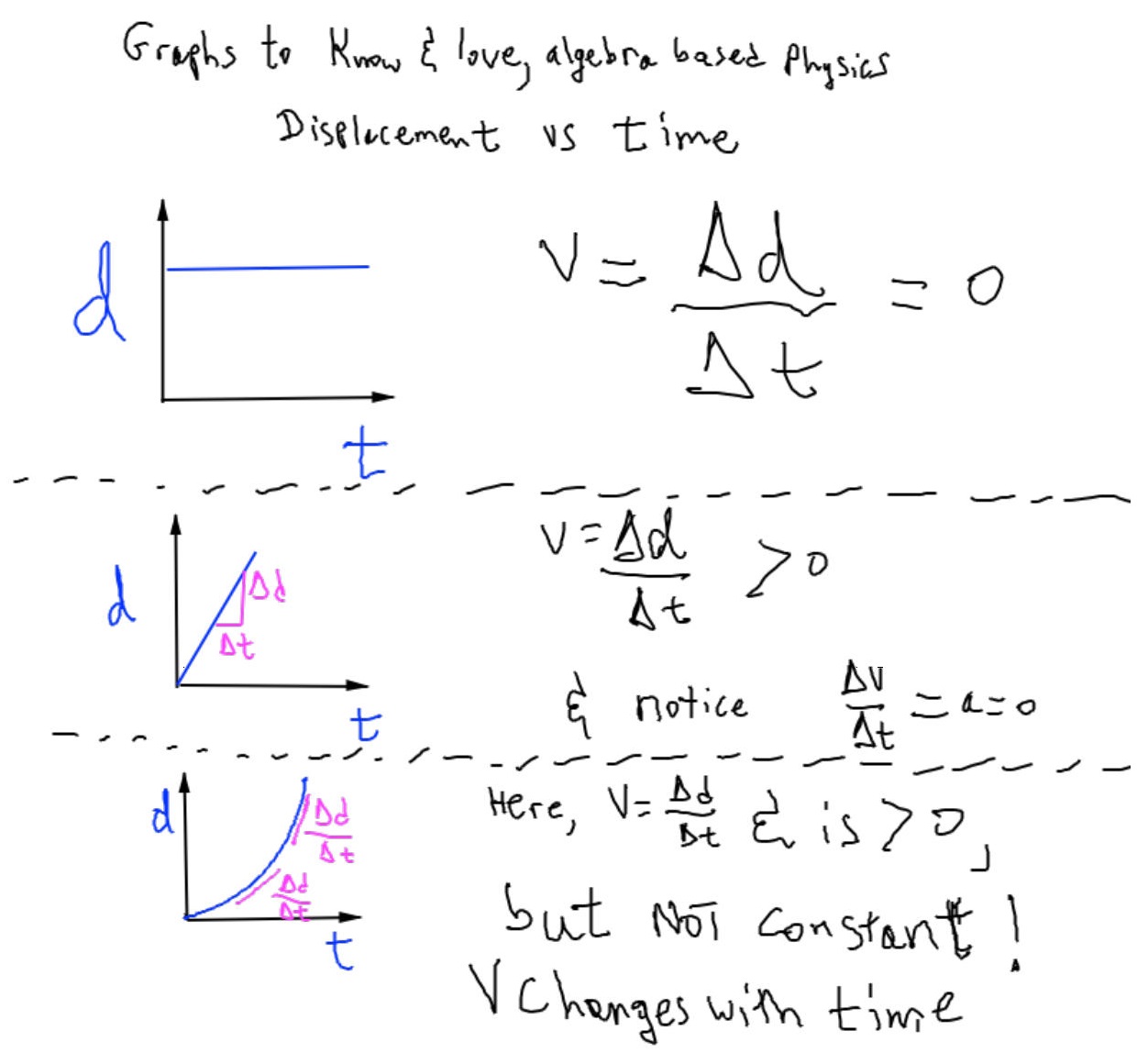
Velocity vs Time
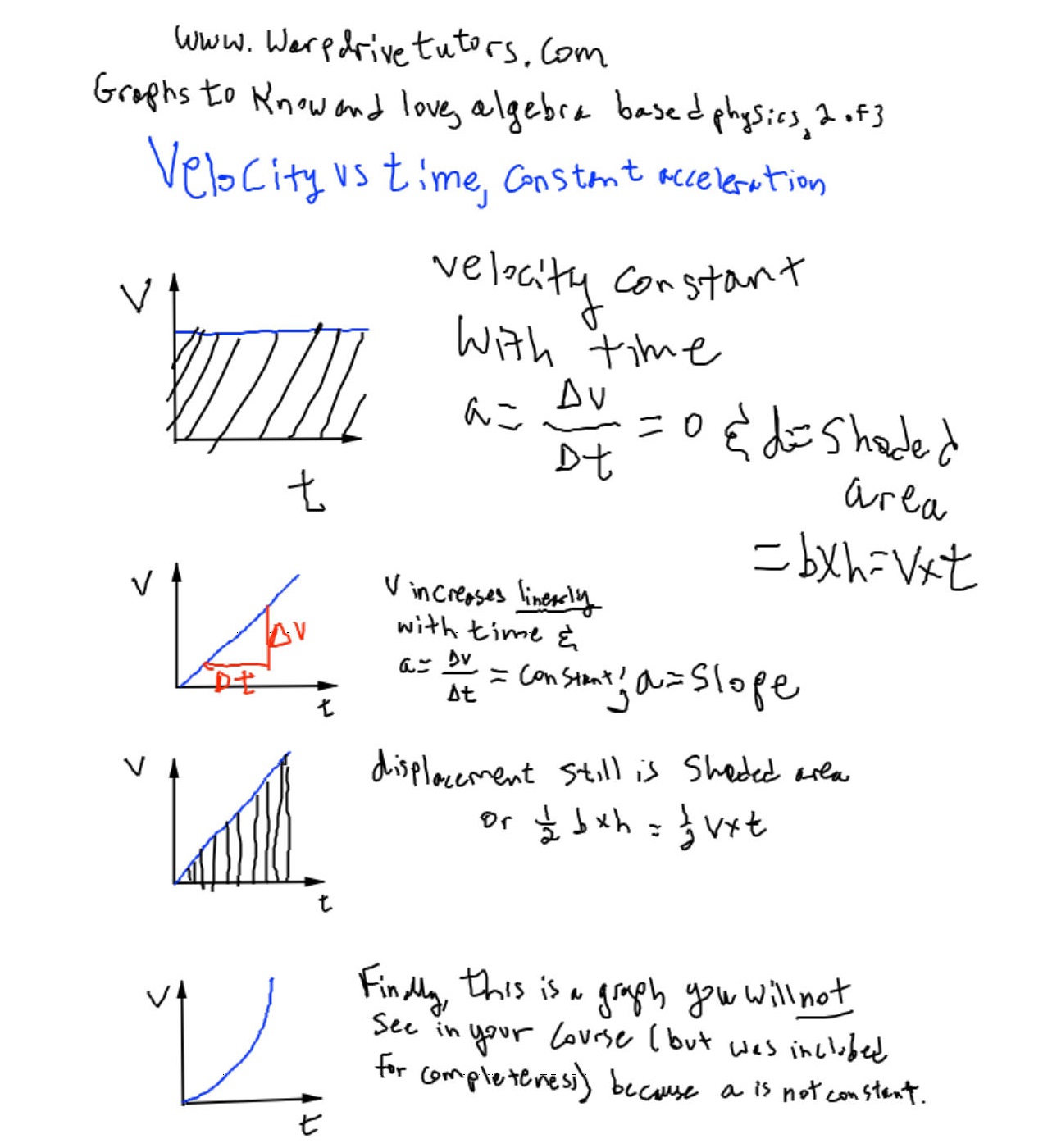
and Acceleration vs Time
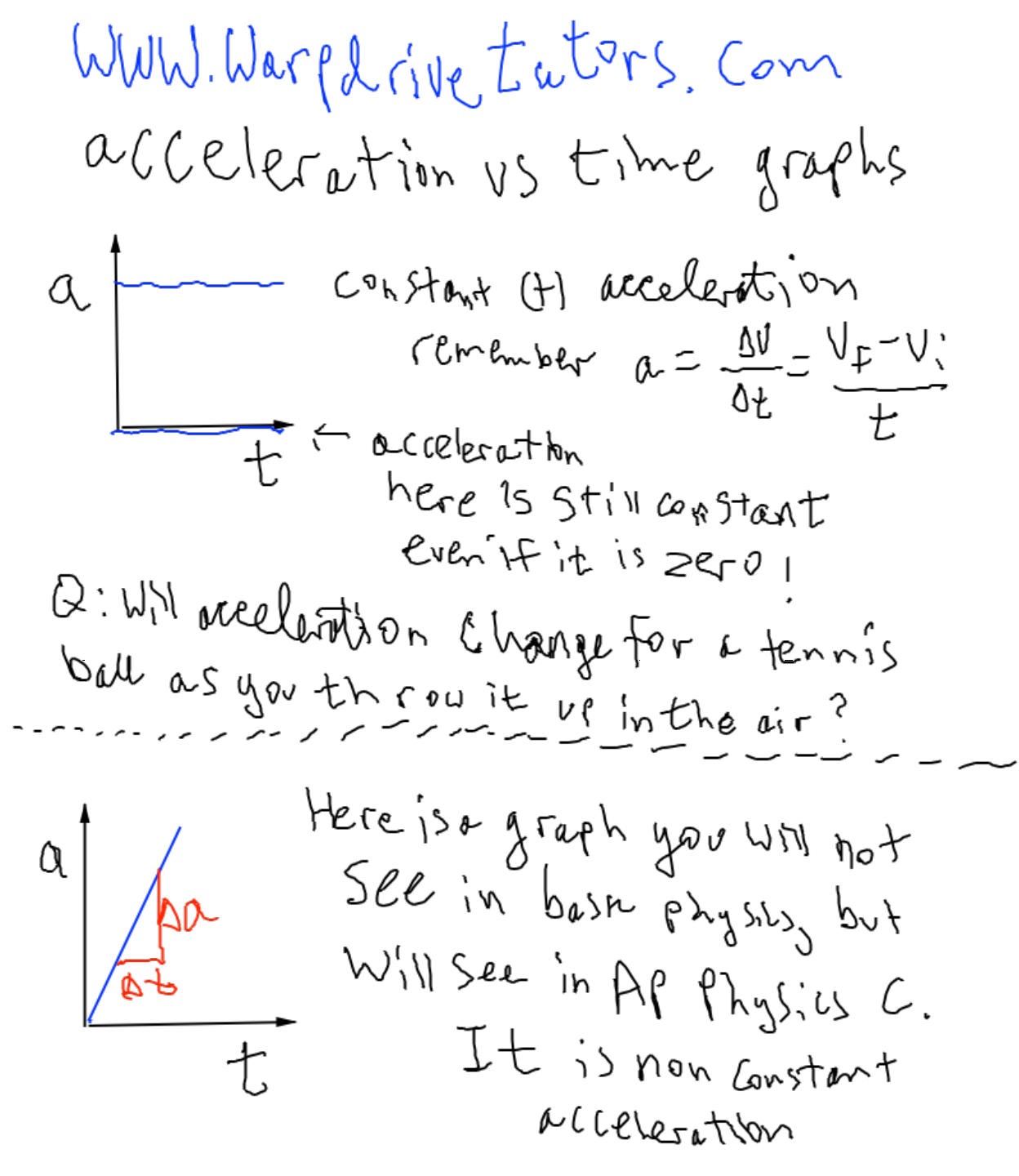
Of course, understanding Newton’s three laws of motion is crucial:
Newton’s First Law is “An object at rest tends to remain at rest, and an object in motion at constant velocity tends to remain in motion at constant velocity, unless a force is acted upon it.” So a plane moving through the air at a constant velocity of 600 mph is the same, within the context of Newton’s First Law, as an apple sitting on your desk.
Newton’s Second Law
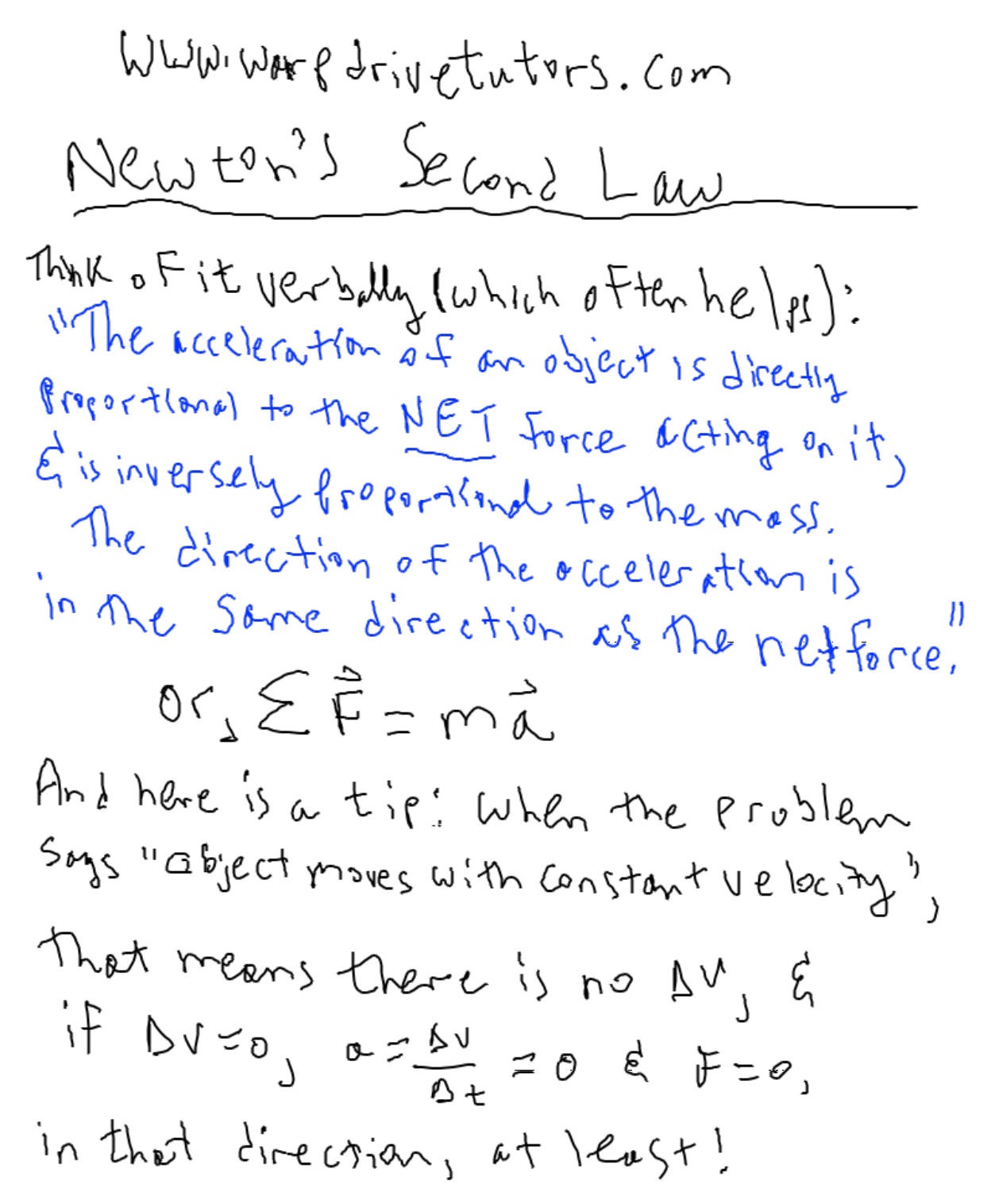
And one type of problem with Newton’s second law that students have trouble with are the “apparent weight” problems that are often associated with elevators. Here are a couple of diagrams that might help clear that up:
Apparent weight in an elevator:
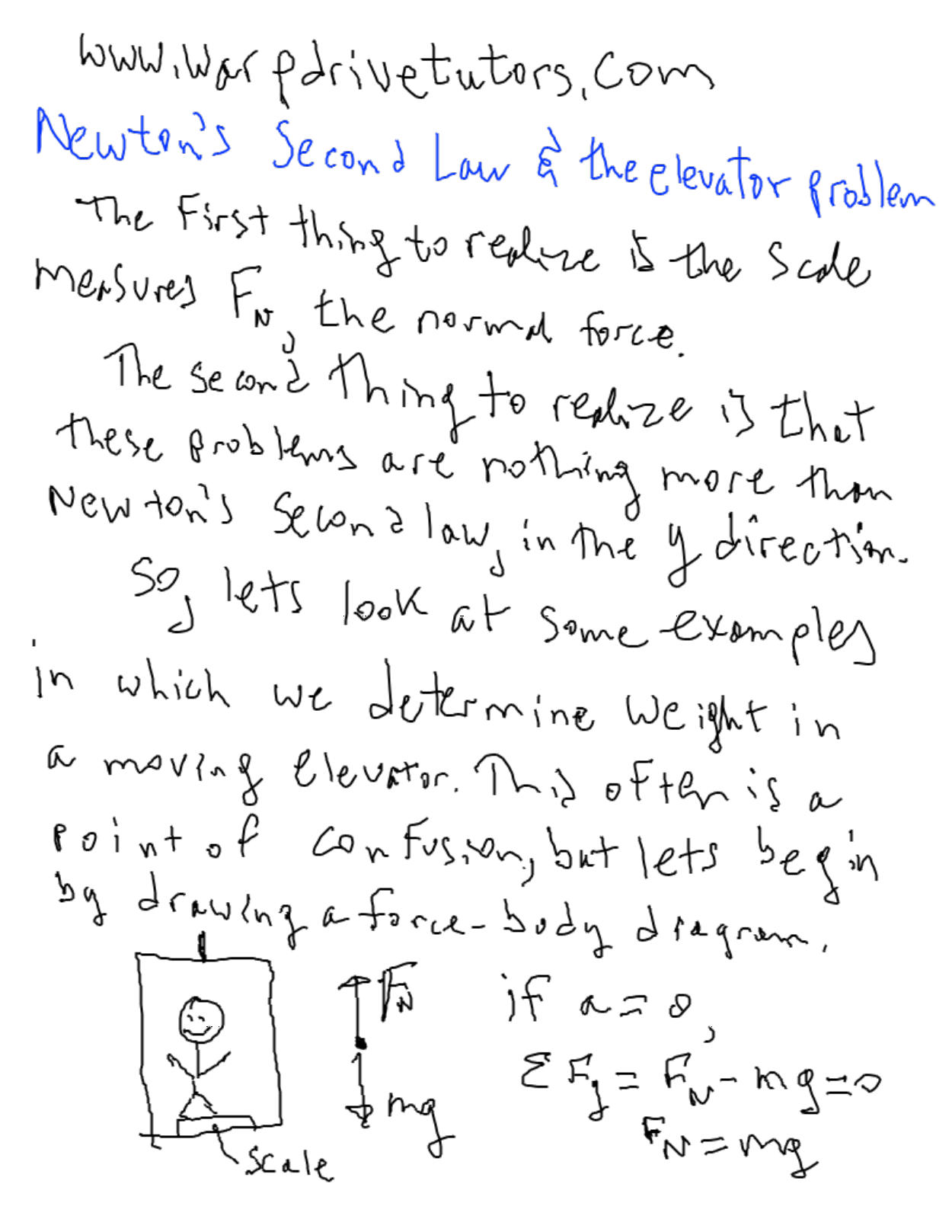
Finally we have Newton’s Third Law. Remember, Newton’s Third Law applies to forces acting on two different bodies:
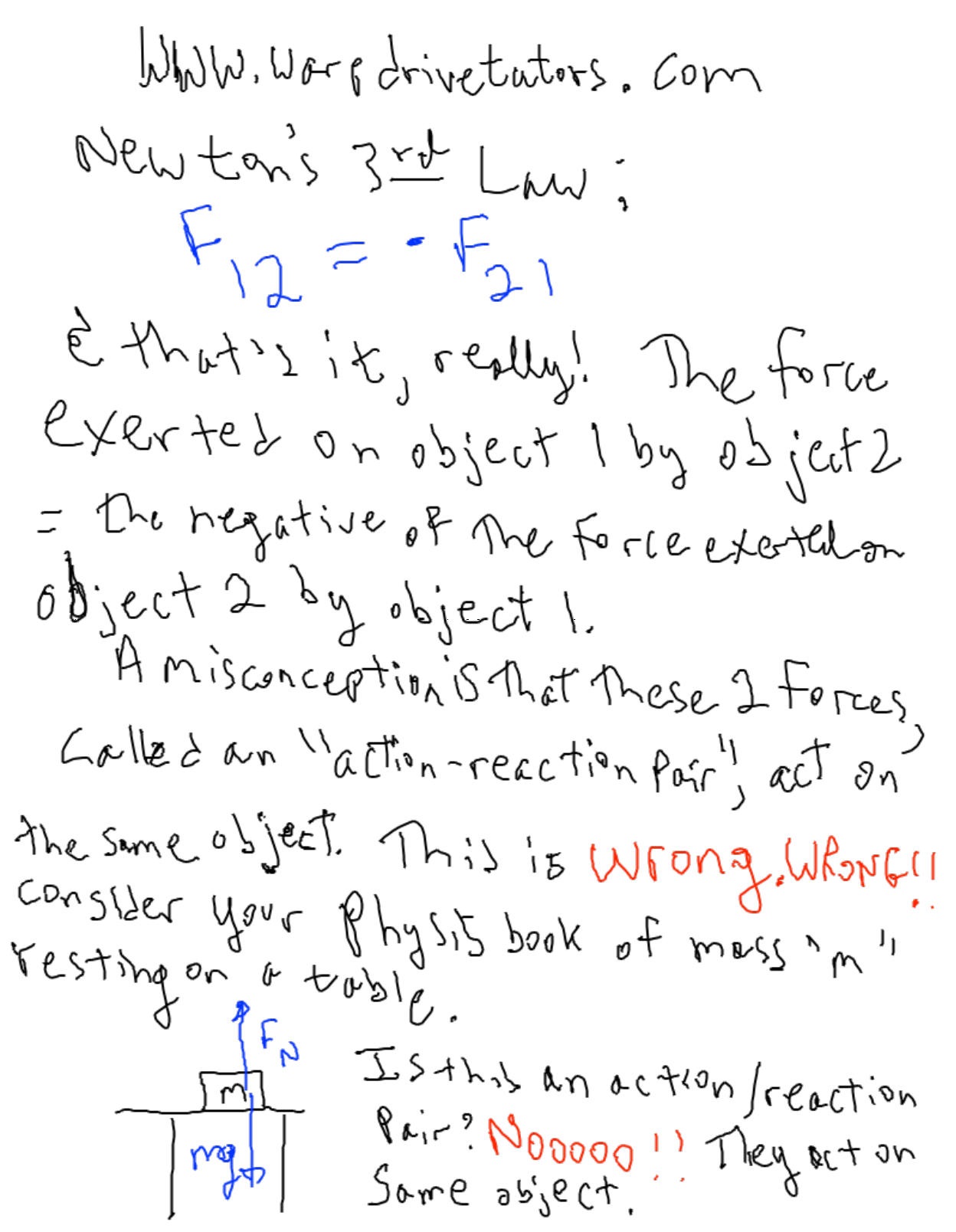
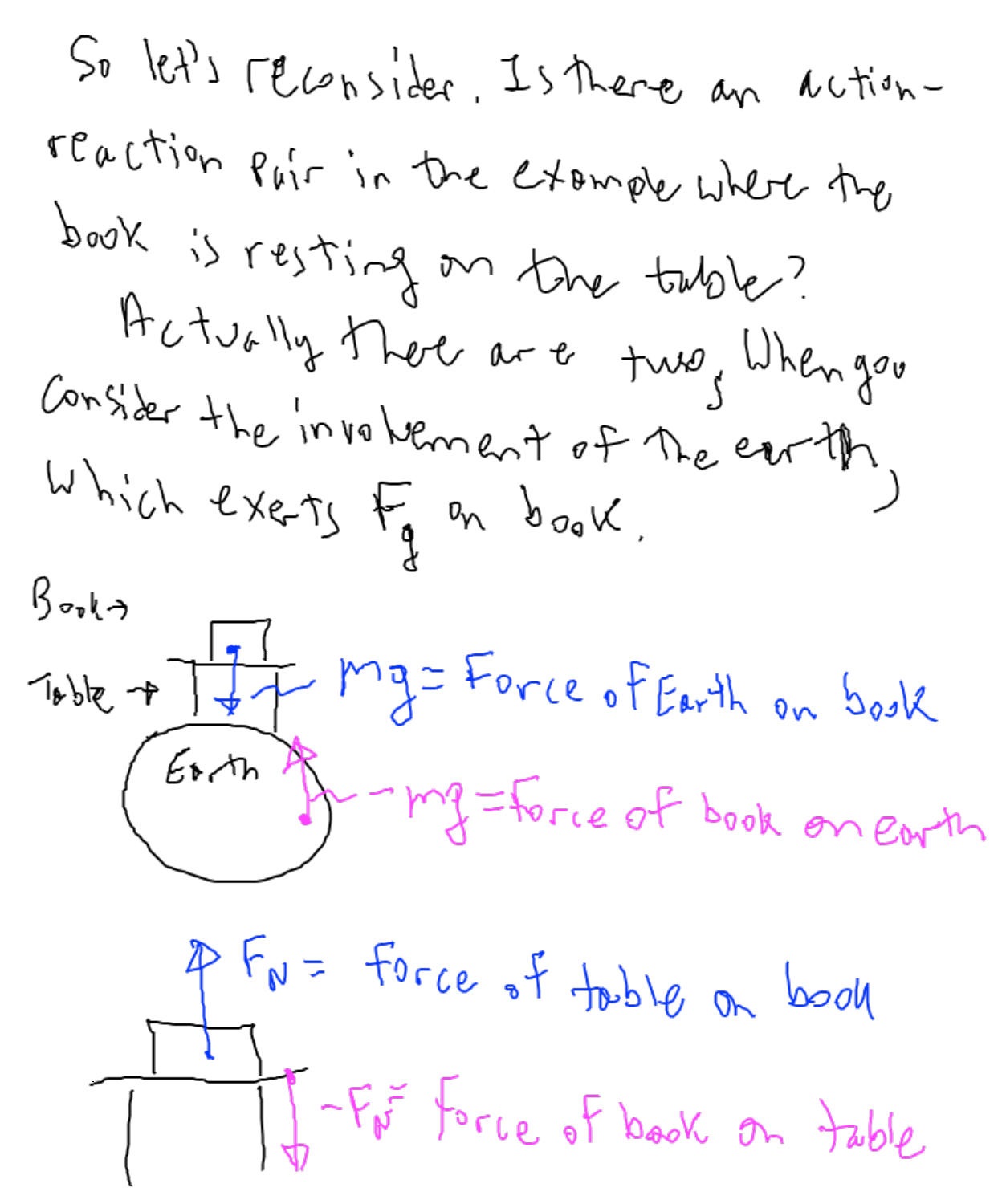
As simple and straightforward as these diagrams appear, students who struggle during the year often have trouble with these concepts. So do yourself a huge favor and learn them, because your life in Physics class will definitely be easier.
Be sure to give us a shout if you have any questions!
